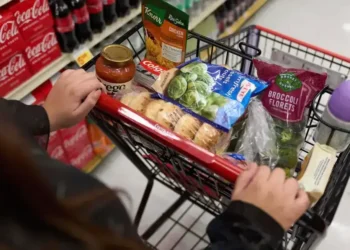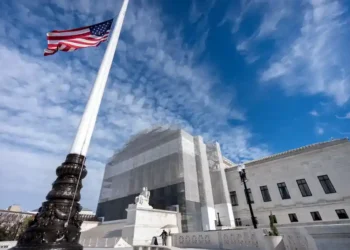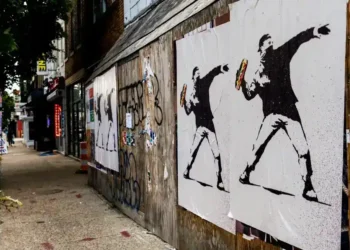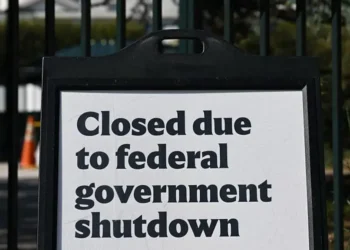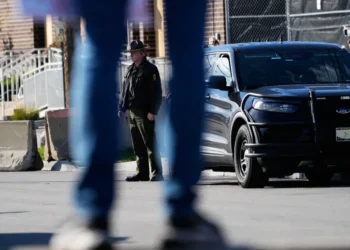SNAP Food Benefits Reach Some States While Others Remain in Limbo
Court disputes linked to the federal government shutdown have left millions of Americans uncertain about accessing November Supplemental Nutrition Assistance Program payments.
Millions of Americans rely on the Supplemental Nutrition Assistance Program (SNAP) to purchase groceries. This weekend, some states have begun distributing November benefits, while others remain on hold amid ongoing legal challenges stemming from the federal government shutdown.
Legal Challenges Delay Payments
The Trump administration initially announced last month that it would not fund SNAP benefits for November due to the shutdown. This decision left nearly one in eight Americans uncertain about access to vital food aid.
On Friday, several states moved to issue full monthly SNAP payments after a federal judge ordered the administration to distribute the funds. However, Supreme Court Justice Ketanji Brown Jackson temporarily paused the order late Friday to allow a Boston appeals court to review a potential longer-term halt. Jackson oversees emergency cases from Massachusetts, where the pause has affected some residents.
While some states continued issuing benefits, millions of SNAP recipients across the country remain in limbo.
Impact on SNAP Recipients
Nearly 42 million Americans rely on SNAP, formerly known as food stamps, to cover groceries. Most recipients earn below the poverty line, which is approximately $32,000 annually for a family of four. Individuals may receive up to $300 monthly, while families of four can receive nearly $1,000, though many households receive less based on income calculations.
The delay has increased demand at food banks, pantries, and free meal programs. Some states provided emergency funding to local organizations, while others distributed direct cash assistance from state budgets.
In North Carolina, Health and Human Services Secretary Dev Sangvai reported that over 190,000 households received just $16 or less after the state paused full payments following the Supreme Court’s temporary order.
States That Have Issued Benefits
Distribution of SNAP funds depends heavily on state-level action. Hawaii, Oregon, and Wisconsin quickly processed full benefits after the federal judge’s order.
“We moved with haste once we verified everything,” said Joseph Campos II, deputy director of Hawaii’s Department of Human Services. Oregon Governor Tina Kotek added that state employees “worked through the night” to issue November benefits.
Other states, including California, Kansas, New Jersey, Pennsylvania, and Washington, also confirmed that some residents received their full payments. Washington Governor Bob Ferguson said more than 250,000 households that missed early-November payments received their full benefit on Friday, with remaining recipients scheduled for later if legal barriers do not persist.
Connecticut Governor Ned Lamont reported that full benefits reached SNAP recipients by Saturday afternoon. Massachusetts Governor Maura Healey said half a million residents received payments on Saturday, with another half million scheduled for next week. Colorado distributed full benefits to about 32,000 recipients before the Supreme Court’s pause, while more than 560,000 were still awaiting funds. Rhode Island provided full benefits to roughly 79,000 households, according to Governor Dan McKee.
The Trump administration noted in a Supreme Court filing that funds already distributed cannot be recovered.
States Still Waiting for SNAP Payments
Before the Supreme Court pause, New York had planned to make full SNAP benefits available by Sunday. New Hampshire, Arizona, and Minnesota also announced upcoming distributions.
In several other states, residents may wait until next week. State officials said they are awaiting guidance from the U.S. Department of Agriculture, which administers SNAP at the federal level.
Why November Benefits Were Delayed
The initial hold on SNAP benefits was a direct result of the federal government shutdown. After two judges ruled that the administration could not skip November payments entirely, the government released partial benefits using a $4.6 billion emergency reserve.
A judge later ruled that partial payments were insufficient, ordering additional funds to provide full monthly benefits. The Trump administration appealed, seeking to suspend any order requiring expenditure beyond the contingency fund. Justice Jackson’s temporary hold reflects that ongoing legal dispute, leaving millions of SNAP recipients awaiting clarity.
This article was rewritten by JournosNews.com based on verified reporting from trusted sources. The content has been independently reviewed, fact-checked, and edited for accuracy, tone, and global readability in accordance with Google News standards.
Stay informed with JournosNews.com — your trusted source for verified global reporting and in-depth analysis. Follow us on Google News, BlueSky, and X for real-time updates.
JournosNews.com follows Google News content standards with original reporting, verified sources, and global accessibility. Articles are fact-checked and edited for accuracy and neutrality.


